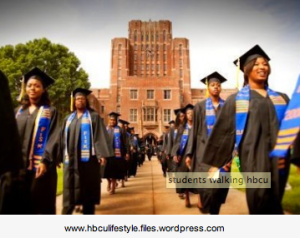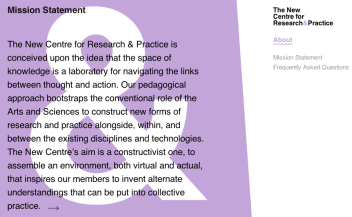Historically Black Colleges and Universities (HBCUs) have produced many of the most prominent African American figures in US history, including Martin Luther King (Morehouse, 1948), Spike Lee (Morehouse 1979), Toni Morrison (Howard, 1953), W.E.B. DuBois (Fisk, 1888), and Jesse Jackson (North Carolina A&T, 1964). The inner politics and purpose of a typical HBC are seen in Ralph Ellison’s Invisible Man. The idea was that traditional (read: white) colleges either did not admit African Americans or discriminated against them once they were there.
According to collegecures.com:
Historically Black Colleges and Universities (HBCU’s) have been around since 1837, the first one being Cheney University in Pennsylvania.
Today there are 105 Historically Black Colleges and Universities in the United States. A lot of people questions whether they’re necessary or not, but these colleges and universities have done great things for the African American community.
While HBCU’s only make up 3% of the college institutions in the United States, 75% more African Americans graduate from an HBCU than any other school, and over half of America’s African American professionals have graduated from an HBCU.
Similar to Native American tribal colleges, their progressive approach was to create their own institutions, as much racism is institutional and therefore invisible. Similarly, Hawaiians are often discriminated against in institutions of higher education. These instances are hard to see when they happen, but clear when outcomes are examined; Hawaiians comprised at one point only 8% of students at the University of Hawaiʻi, Mānoa and only 2% of the faculty. This needs to be compared to Hawaiians’ 19% in the general population and 40-50% in the prison population. One Hawaiian educator, now in his 60s, relates that when he was in elementary school and said he wanted to go to college, his teacher said “Hawaiians donʻt go to college.”
We are a long way from that now, but many problems remain. Even Kamehameha graduates only complete college at a rate of between 48 – 68%, and as a group these are the highest performing Hawaiian students, as Kamehameha has a 7-10% acceptance rate and a 98% college acceptance rate.
Hawaiians have begun to redesign education at all levels, especially K-12, and experiment with alternative, and specifically Hawaiian pedagogy. The verdict remains out on these experiments, but relatively few have been performed at the tertiary level, partly because of institutional, state and Federal constraints.
This is not to disparage the real progress that has occurred at UHM’s Kamakakūokalani Center for Hawaiian Studies, Hawaiʻinuiakea School of Hawaiian Knowledge or UH Hilo’s Ka Haka ʻUla o Keʻelikōlani, but merely to offer another alternative. What does not exist is a Hawaiian liberal arts college.
It is beginning to become clear that the explosion in college costs can be attributed to the rise in non-teaching positions. For one college it was recently reported that of 19,000 employees, only 5,000 were teaching positions. Many of these positions were created with good intentions, but it canʻt be argued that it is fair to pass all these costs on to students, who are already drowning in debt.
What is implicated is a college that refocuses on teaching and is light on administration – such a model could keep costs much lower than is currently considered normal. Lecturers are already teaching for as little at $1000 per course at local colleges, so teaching talent is not expensive to attract. 70% of all teaching faculty in US universities today are lecturers, and less than a quarter are tenured faculty.
I am suggesting a private college that could charge tuition under $5000 per year by eliminating non-teaching positions. Its private status could be used to avoid the many restrictions which force public institutions into creating expensive “specialist” and administrative positions.
I grew up from age 9 around the campus of the only private, non-religious college in the South Pacific, Atenisi University. Atenisi has existed – though several times this existence has been in jeopardy – since 1975, charging tuition of around $100 (Tongan – about $200 USD) per year, with no government or church support, or grants. This brainchild of the great Tongan sage Futa Helu is probably where I got the notion that such an institution is possible. A New Zealand film maker was inspired enough to make a documentary about Helu and Atenisi, linking them to the Tongan democracy movement (Atenisi is a transliteration of Athens):
Similarly, frustrated by the increasingly corporate-driven model of academia, the scholars Creston Davis and my PhD class/cohort-mate Jason Adams started their own university, the Global Center for Advanced Studies. GCAS features on its faculty many of the top philosophers and theorists in the world, such as Slavoj Zizek and Gayatri Spivak. Alain Badiou, formerly chair of Philosophy at the École Normale Supérieure and who Zizek has called “Hegel walking amongst us” is its Honorary President.
Adams formed another school in 2014, the New Centre for Research and Practice, in Michigan.
There is beginning to be a small group of Hawaiian college administrators who could lead such an institution. As Ron Paul has noted, the current college funding system (debt – $1 trillion of it) is broken. This is just an idea of an alternative that could return university study to what it was originally meant to be – a place of teaching, learning and the building of skills, rather than a machine processing the monies from tuition, grants and sports. If nation-building is a serious goal for Hawaiians – and it is – an institution to educate our people our way is crucial.



